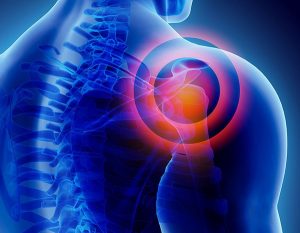Michael Faraday and the Principles Underlying Electromagnetic Induction
Foundational research paved the way for the technologies behind PEMF devices today
By PEMF Mat Reviews content team
Updated: Nov 20, 2020
Foundational Research
Michael Faraday was one of the most influential scientists in history, a major contributor to the study of electromagnetism and electrochemistry. One of Faraday’s main discoveries include the principles underlying “electromagnetic induction, diamagnetism and electrolysis.” (Bagnato et al., 2016; Nelson et al., 2013.) In the 1830s, he proposed the equations that describe how a time-varying (pulsing) electromagnetic field will induce an electrical field in a nearby conductor, like copper or tissue. This principle, Faraday’s Law, is the physical mechanism underlying many of the PEMF devices that are currently on the market today. In one of our old blog posts, we wrote about how Nikola Tesla invented the “Tesla Coil” and showed that it was harmless to pass electrical currents through the human body, thus the reason magnetic field strength is measured in Tesla (T). The characteristics of the electromagnetic pulse (i.e. frequency, duration, amplitude) determine the magnitude, efficacy, and safety of the magnetic and electrical fields delivered to the tissue.
Related Research Studies
Research Study on Decreased Pain and Inflammation - Low Frequency
Below is a study that we found regarding the reduction of inflammation and pain when a low frequency PEMF device is used. “PEMF (low frequency) has also been linked to cell membrane adenosine receptor expression. Cadossi and colleagues have reported that PEMF exposure results in increased expression of the A2A and A3A adenosine receptors in a variety of cells and tissues (Varani et al., 2017). Activation of these receptors by endogenous adenosine is associated with reductions in prostaglandins and inflammatory cytokines, again consistent with the published clinical findings of reduced pain and inflammation. In contrast to drug therapies, it is becoming clear that PEMF interventions likely operate via a few biological cascades rather than one narrow signaling pathway. As research into PEMF mechanisms of action continues to unfold, the gained knowledge will be helpful for further optimization of device engineering, treatment dosing, and exploration of new clinical indications.”

Research Study on Osteoarthritis - High Frequency
A non-targeted PEMF device (high frequency) was recently shown to improve pain and increase function in a RCT involving patients with knee osteoarthritis (Bagnato et al., 2016). An earlier study, investigating a targeted PEMF device therapy (high frequency) for knee osteoarthritis also showed significant reductions in pain (Nelson et al., 2013). The comparable study design and clinical populations in these trials lend to a meaningful comparison of use and effectiveness for the non-targeted and targeted PEMF devices. The results show that after one month of consistent treatment, the targeted PEMF device, developed explicitly to reduce inflammation, produced a more pronounced reduction in pain and did so at significantly lower doses (12 h daily vs. 30 mins daily).
Conclusion
In the last 30 years, clinicians and scientists have developed a significant volume of research involving cell models, animals, and humans demonstrating the biological effects and clinical value of PEMF treatment for a variety of conditions. Since the early findings of scientists such as Faraday and Tesla, advancement of this field has significance for human medicine, particularly in the areas of pain management, mitigation of inflammation, bone healing, and wound healing. The most rigorous and compelling research has been conducted on devices that are regulated by the FDA. Check out the rest of this site to learn more about the various PEMF Devices that are approved and registered by the FDA.

Medical Disclaimer
This website does not contain medical/health advice. The medical/health information is provided for general informational and educational purposes only and is not a substitute for professional advice. Accordingly, before taking any actions based upon such information, we encourage you to consult with the appropriate professionals. We do not provide any kind of medical/health advice. THE USE OR RELIANCE OF ANY INFORMATION CONTAINED ON THIS SITE IS SOLELY AT YOUR OWN RISK.
Affiliate Disclaimer
This website may contain links to affiliate websites, and we receive an affiliate commission for any purchases made by you on the affiliate website using such links.


